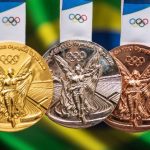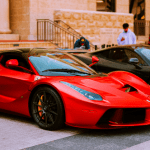 Creepy
Creepy  Creepy
Creepy  Technology
Technology 10 Scientific Breakthroughs of 2025 That’ll Change Everything
 Our World
Our World 10 Ways Icelandic Culture Makes Other Countries Look Boring
 Misconceptions
Misconceptions 10 Common Misconceptions About the Victorian Era
 Mysteries
Mysteries 10 Strange Unexplained Mysteries of 2025
 Miscellaneous
Miscellaneous 10 of History’s Most Bell-Ringing Finishing Moves
 History
History 10 Great Escapes That Ended Right Back in Captivity
 Weird Stuff
Weird Stuff 10 Fascinating Things You Might Not Know About Spiders
 Food
Food 10 Everyday Foods You Didn’t Know Were Invented by the U.S. Military
 History
History 10 Odd Things Colonial Americans Kept at Home
 Creepy
Creepy 10 More Representations of Death from Myth, Legend, and Folktale
 Technology
Technology 10 Scientific Breakthroughs of 2025 That’ll Change Everything
 Our World
Our World 10 Ways Icelandic Culture Makes Other Countries Look Boring
Who's Behind Listverse?

Jamie Frater
Head Editor
Jamie founded Listverse due to an insatiable desire to share fascinating, obscure, and bizarre facts. He has been a guest speaker on numerous national radio and television stations and is a five time published author.
More About Us Misconceptions
Misconceptions 10 Common Misconceptions About the Victorian Era
 Mysteries
Mysteries 10 Strange Unexplained Mysteries of 2025
 Miscellaneous
Miscellaneous 10 of History’s Most Bell-Ringing Finishing Moves
 History
History 10 Great Escapes That Ended Right Back in Captivity
 Weird Stuff
Weird Stuff 10 Fascinating Things You Might Not Know About Spiders
 Food
Food 10 Everyday Foods You Didn’t Know Were Invented by the U.S. Military
 History
History 10 Odd Things Colonial Americans Kept at Home
10 Allegories That Imagine if Countries Were People
Anthropomorphic personifications have been used to symbolize the essence of a country and its people, often appearing in cartoons and political propaganda. Usually, they come as warrior deities to depict a nation’s military power and strength. Not only countries, but entire continents have been bestowed human attributes.
For example, the famous map of 1593 by Italian cartographer Cesare Ripa illustrated Europe as a lady in fine clothing, bedecked with jewels and a crown. Asia was also a woman in rich apparel, but her passive stance and downward gaze contrast sharply with Lady Europe’s haughty and domineering posture. Africa was a black woman with breasts and legs exposed, while the Americas, similarly exposed, had on a feathered headdress and held a bow and arrow.
With the rise of political cartoons, national issues and world affairs were increasingly conveyed through metaphor, allegory, and satire as personification depicting the attributes of the ordinary citizen became popular. These portrayals of the Everyman resonated deeply with the common people and have been accepted as a more realistic embodiment of national character.
Related: 10 Times Countries Were Banned from Olympic Games
10 Bharat Mata (India)
Bharat Mata, or Mother India, is a symbol that unifies the country’s diverse peoples and cultures, transcending the differences in language and religion in the vast subcontinent. The idea of having a mother goddess for the Indian nation-state came with the rise of patriotic fervor and struggle against British rule in the 19th and 20th centuries. But it has ancient roots in the tradition of assigning patron deities for specific places, and every village is associated with a grama-devi. Kolkata, for instance, has Kali, and Mumbai has Mumba Devi.
The first serious challenge to the British East India Company came in the unsuccessful 1857 Sepoy Uprising. In 1873, the play Bharat Mata by Bengali writer Kiran Chandra Bandyopadhyay, set during the 1770 Bengal famine, featured a goddess appearing and urging the people to rebel against the British. This theme was repeated in an 1882 poem by Bankim Chandra Chattopadhyay (or Chatetterjee), “Vanda Mataram” (“I Bow to Thee, Mother”). The image of the goddess was first defined in a 1905 painting by Abanindranath Tagore as a wandering minstrel with four arms, each holding a sheaf of grain, a piece of cloth, a book, and memory beads.
Originally representing only Bengal, the goddess had been adopted by the rest of India as Bharat Mata by the 1930s, as the independence movement spread and gathered steam. Her depiction evolved into a woman wearing a sari, standing on a map of India. The first temple to the new mother goddess opened in 1936 at Varanasi. Today, the independent and secular Indian state still reveres her as a powerful unifying symbol.[1]
9 Juan de la Cruz (Philippines)
Juan de la Cruz, Spanish for John of the Cross, with his “salakot” hat and native attire, symbolizes the Filipino masses and their national identity. It is therefore surprising that the figure was conceived by… a Scotsman.
Edinburgh native Robert McCulloch-Dick founded the Philippine Free Press in 1908, arriving in the country from the United States as a court reporter for the Manila Times. That job acquainted him with court records, where he noticed the frequency with which the name Juan de la Cruz popped up on police blotters, court dockets, and baptismal certificates. Juan was the most common name during the Spanish period. As most Filipinos were illiterate then, they would simply put down a cross to indicate their names on documents, thus “Juan de la Cruz.” McCulloch-Dick began using the name to represent the common Filipino.
When McCulloch-Dick established his own Philippine Free Press magazine, he used the character to tell stories, usually relating to crime. In 1912, Jorge Pineda, the magazine’s resident artist, first drew what became the standard depiction of Juan de la Cruz — a naive-looking fellow with a native hat, camisa de chino shirt, native trousers, and footwear. Wider media picked up the image to articulate other issues beyond crime, topics of national concern, which continue to this day.[2]
8 Srulik (Israel)
Kariel Gardosh, born Karl Goldberger in Budapest in 1921, saw most of his family murdered by the Nazis in Auschwitz in World War II. In 1948, he immigrated to the newly established state of Israel and joined the staff of the newspaper Maariv as a political commentator and cartoonist under the pseudonym Dosh. Gardosh decided that the new nation must have a personification, and the memory of Auschwitz was still with him when he sat down to draw a character that was the complete opposite of antisemitic caricatures of Jewish people in the 1930s.
“The symbol of the state should be a small boy in the clothing of a typical Israeli child.” Dosh reflected. “In my eyes, to symbolize Israel as I would like to see it: the spirit of the state’s early years and all the positives about it”. Dosh drew a young boy wearing a cargo shirt, khaki pants, sandals, and an Israeli bucket hat. He was named Strulik, a common nickname for boys named Yisrael.
First appearing in 1951 as a child below ten years old, Strulik’s age over the years paralleled that of his nation. As Israel developed and progressed, so did Strulik. Already a teen during the 1967 Six-Day War, he had exchanged his kibbutz attire for an IDF uniform. His face also reflected the problems and issues Israel was confronting: from an innocent kid with an optimistic smile, Strulik took on a more cynical demeanor as he matured. Dosh decided to halt his aging process and make Strulik a perpetual teenager.
Israelis felt that Strulik expressed exactly their own sentiments, and he became a beloved national symbol. In 1998, Israel issued a postage stamp with his image in celebration of its 50th anniversary.[3]
7 Eriu (Ireland)
The mysterious race of demigods, the Tuatha De Danann, said to possess divine wisdom and magical powers, arrived in Ireland in the misty ancient past from a spirit Otherworld and established themselves as its rulers.) After a century, another group called Milesians, Gaels who journeyed through Spain to reach Ireland, came to challenge their sovereignty. The Tuatha De Danann resisted, but three sisters—Eriu (fullness, bounty, abundance), Fodla, and Banba—had already intuited that the Milesians, from whom the Irish trace their ancestry, were destined to take over, and it was time for the Tuatha to return to the Otherworld.
The sisters were tasked to negotiate with the Milesian ruler Amergin. The Druid met Eriu atop the sacred hill Uisneach, where she conceded the land to be named after her and her sisters. Amergin agreed, and the country took its name from Eriu (Eire in Irish, Erin in English). Since then, Eriu, and to a lesser extent, Fodla and Banba, became the representation of Ireland.
Throughout the centuries, Ireland’s tragic history found expression in portrayals of Eriu weeping, yet the hope that she would stir herself one day was constant:
When Erin first rose from the dark swelling flood,
God bless’d the green island and saw it was good;
The em’rald of Europe, it sparkled and shone,
In the ring of the world the most precious stone.
This poem, “When Erin First Rose,” written by William Drennan in 1884, was the first to call Ireland “The Emerald Isle.” Today, sports teams, clubs, political parties, and other groups chant the slogan, “Erin Go Bragh! (“Ireland till the end of time!”) as an expression of national pride.[4]
6 Holger Danske (Denmark)
Unlike the other characters on this list, the personification of Denmark’s Holger Danske, or Holger the Dane, was probably based on a real person. In the French legend La Chanson de Roland, from 1060, he was a minor 8th-century warrior who served the Frankish king Charlemagne. A later story from the poem “La Chevalerie d’Ogier de Danemarche” (1200–1215), makes him the son of Gudfred, king of Denmark and Charlemagne’s enemy. Holger becomes a hostage in France, but in a twist of fate, he saves the country from the Saracens.
Holger’s story was much embellished in later literature, and from a minor character, he morphed into a noble hero. The 18th-century opera Holger Danske even gave him an Arab girlfriend, Rezia, the daughter of the sultan of Baghdad. Legends tell that he lies sleeping in the cellar under Kronborg Castle, where he will awaken to save Denmark whenever danger threatens the nation.
Hans Christian Andersen’s tale tells that his beard grew into the marble table as he slept, being visited every Christmas Eve by an angel who tells him that Denmark is safe and he can sleep on. He did save Denmark once, in spirit if not in person. One of the largest resistance groups to fight the Nazis was named Holger Danske, and his opera was performed repeatedly throughout the occupation as a call to unity and patriotism.
We can still visit the giant statue of Holger the Dane at Kronborg Castle as he sleeps in suspended animation.[5]
5 Deutscher Michel (Germany)
Deutscher Michel or German Michel is practically unknown outside Germany, the more familiar representation of the nation being Germania, a young woman with long, flowing red hair, wearing armor and carrying the Reichsschwert, the imperial sword. Her shield displays a black eagle; she either carries or wears the crown of the Holy Roman Empire. Germania is an ałlegory of the nation’s power and strength.
German Michel is the complete opposite of Germania and symbolizes how the Germans actually see themselves. He is usually depicted as a simple, down-to-earth figure, pudgy, undersized, and middle-aged, dressed in a nightgown and a tasseled nightcap. He might be portrayed positively or negatively depending on who is drawing him. The tendency to critical self-reflection and self-mockery is distinctly German, and Michel is a perfect example. It is reflected in his very name, Michel, the diminutive of Michael, the powerful martial archangel and Germany’s patron, brought several notches down.
Michel first appeared in the 16th century, but only became widely popular during nationalistic fervor in the 19th century. Michel was used by poets and journalists to educate the masses politically. The Germans, having accepted without protest foreigners’ view of them as harmless but decent fellows (at least before unification and subsequent disastrous career), Michel was depicted accordingly. The tassel of his nightcap became an indicator of where political and economic winds were blowing, drooping in bad times, pointing upwards in good times. He became younger and more dynamic, alternating between artisan and bourgeois depending on the mood of the times.
Michel underwent another transformation with the establishment of the Second Reich and an elevated sense of nationhood. In an 1895 sculpture by Friedrich Reusch, Michel was depicted as a stocky, muscular man in a loincloth and tasseled cap, holding a flail over his left shoulder. But generally, Michel was portrayed negatively, and the Nazis hated him for this. After World War II, Michel continued to be the mouthpiece of West German political commentators.[6]
4 Marianne (France)
Marianne is the feminine figure representing France, and her roots can be traced back to the Roman goddess of freedom, Libertas. Libertas is the very goddess whose famous statue now stands guard over New York Harbor. She was adopted by French revolutionists in 1792 to replace the image of the despised monarch as a symbol of the nation. Renamed Marianne, a combination of Marie and Anne, the most common French female names in the 18th century, she wore a Phrygian cap, the headgear of freed slaves in ancient Greece and Rome.
The most famous depiction of Marianne is Eugene Delacroix’s 1830 painting La Liberté guidant le peuple, which imagines her as a martial, Athena-like character leading the people to battle. Her bare breasts signify her defiance of traditional conventions in the name of liberty. Less well-known is Honore Daumier’s La République, where those breasts are being sucked by two infants, symbolizing Marianne as nourisher and sustainer of France.
When the monarchy was restored in the early 19th century, Marianne took a hiatus, but since the return of republicanism, she has been ubiquitous. Her monument was unveiled at the Place de la République in Paris in 1883 (where she was draped with the Ukrainian flag quite recently). She appears on busts in town halls, stamps, coins, government letters, and other official documents. Famous French celebrities have served as models for Marianne—Brigitte Bardot, Michèle Morgan, Catherine Deneuve, Laetitia Casta, and Sophie Marceau, making her even more relevant in modern, secular times.[7]
3 Brother Jonathan/Uncle Sam (United States)
Before the 19th century, the young United States was represented by Brother Jonathan, a less-than-stellar character. He was an obnoxious and cunning trickster with ill manners, but in those early years, Americans identified with his courage and lack of sophistication, remembering with pride that the same underdog qualities helped them achieve independence. They thought their rustic simplicity and crude manners were the perfect foil for the pompous, aristocratic British. The name Jonathan was popular in New England, and during the Revolution, the British derisively called the patriot colonists in that region “Jonathans.” Americans as a whole adopted it, and Brother Jonathan continued to be popular until the Civil War.
Meanwhile, during the War of 1812, a meat-packer from Troy, New York named Samuel Wilson supplied beef to the US Army in barrels stamped “U.S.” for “United States.” Since Wilson was affectionately called Uncle Sam, troops began referring to the label as standing for “Uncle Sam’s.” The local newspaper, the Troy Post, circulated the story, and from then on, the United States was identified with Uncle Sam.
It now appears that Uncle Sam had been used to stand for the US before this time, but the Troy Post story is accepted as the official origin of the nation’s nickname. In 1837, in the only known cartoon that depicts Brother Jonathan and Uncle Sam together, the latter is slumped in an armchair, sick of his financial troubles, while Brother Jonathan calls for a doctor.
Political cartoonist Thomas Nast defined the image of Uncle Sam in the second half of the 19th century, with his Lincolnesque white beard, stars and stripes suit, and top hat. By this time, with America all set to become a world power, it felt it had outgrown Brother Jonathan. The uncouth Yankee could not represent Southerners and the new western states of the expanding nation. The stoic and sober Uncle Sam supplanted Jonathan as the face of modern, industrial United States and its powerful government.[8]
2 John Bull (United Kingdom)
British history stretches back more than 1,500 years, yet it was not until the 18th century, with the rise of political satire, that the nation began to be represented by a typical Englishman, “an honest, plain-dealing fellow, choleric, bold, and of a very inconstant temper.” Named John Bull (the “Bull” surname may be an allusion to British fondness for beef), he was the creation of Scottish scientist, doctor, and satirist John Arbuthnot, who introduced him in 1712 in a series of pamphlets allegorizing the struggle against “Lewis Baboon” (King Louis XIV). In the story, John Bull teams up with his linen draper friend “Nicholas Frog” (Netherlands) to resist Lewis’s interference in their trade.
John Bull emerged in caricature in 1762, and cartoonists often drew him as a somewhat stupid figure hobbled by debt, taxation, or oppression. By the mid-19th century, to reflect growing industrialization and prosperity, Bull had become a stout man in tailcoat with breeches, the Union Jack displayed on his waistcoat, and often accompanied by a bulldog. His portly dimensions, rosy cheeks, and plump face signified abundance and good health. Bull was a hard-headed, down-to-earth character given to drink, averse to intellectualism, fond of dogs, horses, ale, and country sports. He was more assertive and was prepared even to criticize the royal family.
Like Uncle Sam, John Bull was used in recruiting posters in World War I, pointing to British men and saying, “Who’s absent? Is it you?” By the 1950s, he was seen less frequently, but he remains a beloved symbol.[9]
1 Johnny Canuck (Canada)
Donald Trump’s threatened invasion and annexation of Canada is nothing new. In 1869, two years after the Confederation united the three British provinces of North America into the Dominion of Canada, the menace from its southern neighbor was still an issue. That year, a cartoon in Montreal humor magazine Grinchuckle showed a muscular fellow kicking Uncle Sam back across the border.
Called Johnny Canuck, he subsequently appeared in more political cartoons, commonly portrayed as a lumberjack. His last name Canuck was simply the nickname for a Canadian, possibly originating from the (surprise!) Hawaiian word for human—”kanaka”—but used by Americans and British to mean “foreigner.” It thus began as a derogatory term for French-Canadians, but it gradually lost its negative connotations and, in time, applied to all Canadians.
Johnny represented Canada until the end of the 19th century, when he virtually disappeared from view. But as Canada was drawn into World War II, Johnny came roaring back in 1942, this time as a barrel-chested fighter pilot eager to do battle with the Nazis. This makeover was the work of 14-year-old Leo Bachle, cartoonist for Dime Comics, who was inspired by the superhero craze that produced Superman and Batman in the late 1930s. Johnny had no superpowers, but made up for it with athletic agility and excellent flying skills. Fans followed his adventures as a captain in the Royal Canadian Air Force through 28 issues of Dime Comics until 1946.
In 1975, Johnny was transformed yet again, this time as Captain Canuck, a Mountie whose encounter with aliens gave him superhuman powers. Wearing a white and red costume emblazoned with maple leaves, he is the perfect counterpart to Captain America. As a symbol of Canadian identity and independence, he defends Canada against external dangers. On his 50th anniversary, Captain Canuck was depicted as defiantly wagging a finger at President Trump, whose tariffs and threat to make Canada the 51st state have awakened Canadian sense of unity and nationalism once again.[10]








